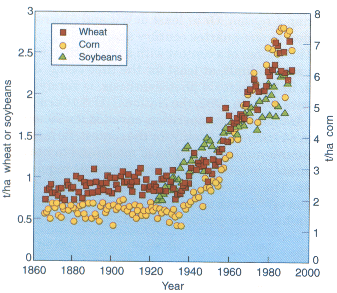 Figure 7.2.1. The course of wheat, maize, and soybean yields in
the United States (U.S. Department of Agriculture,
various years).[USDa]
Figure 7.2.1. The course of wheat, maize, and soybean yields in
the United States (U.S. Department of Agriculture,
various years).[USDa]
Accurate statistics allow Figure 7.2.1 to depict the rising yields of American wheat and maize since Lincoln's era and the rising yields of soybeans since they began appearing in U.S. statistics.
 Figure 7.2.1. The course of wheat, maize, and soybean yields in
the United States (U.S. Department of Agriculture,
various years).[USDa]
Figure 7.2.1. The course of wheat, maize, and soybean yields in
the United States (U.S. Department of Agriculture,
various years).[USDa]
Scholars have deciphered much earlier yields. In the Bulletin on Sumerian Agriculture, scholars struggle with units and hints from the era of original agriculture. Rising in 3000 B.C., the cities of Sumer and Ur are highlights on the yardstick of time in Appendix B showing the rate at which agriculture has progressed. Using Postgate's article, I figure that during Ur IV, ``an actual area-yield averaged out over a 10-year period, of 23 gur 230 sila per bur" comes to 1,100 l/ha. On the other hand, Adams translates 30 gur per bur into 1,134 l/ha. Halstead sets the ancient yields at ``ca 1,000 kg/ha (more or less ...)". The disparity illustrates Postgate's title The Problem of Yields in Cuneiform Texts. Given the antiquity of the records, the disparity does not surprise. Ancient barley on irrigated land in Mesopotamia yielded 0.7 to 1 t/ha, remarkably close to the modern yields of about 1.6 t/irrigated ha (Adams, 1981[Ada81], 146; Halstead, 1990[Hal90]; Postgate, 1984[Pos84]; Weiss, 1986[Wei86], 73).
Looking back over agriculture since its origins, Evans saw units reflecting outlook. Gatherers would have wanted to harvest more per hour, and imitating prehistoric circumstances, a modern person found he or she could harvest 1 kg of the wild relatives of wheat/hour. During intervening eras yield was reckoned per seed, and 45 units of yield/unit of seed was good. Our modern concentration on yields per land exemplifies an environmental outlook. In the modern, environmental units, wild cereal in Galilee, early millet in China, and wheat in Medieval Europe all yielded one-half to three-quarters t/ha (Evans, 1980[Eva80]).